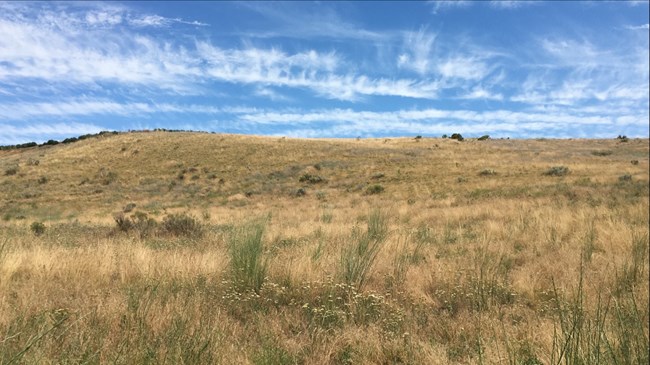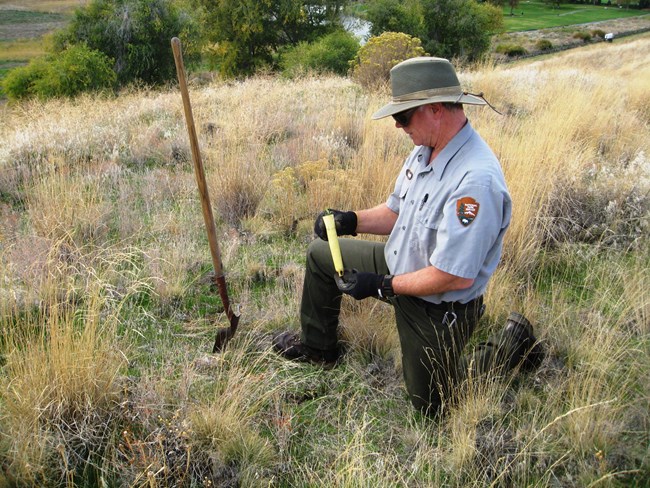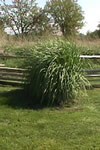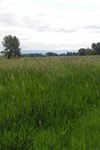
NPS Photo Whitman Mission is located on the southern extreme of the Palouse Prairie Region in eastern Washington state. Originally, this prairie was dominated by perennial grasses, principally bluebunch wheatgrass, which flourished over the plains. Intermixed with it were smaller patches of sandberg bluegrass and Idaho fescue. Large native herbivores were generally absent from the Palouse, and because of this the grasses evolved with a low resistance to grazing. Subsequent grazing by domestic livestock and extensive cultivation for wheat are the main reasons why native perennial grasslands are now rare on the Palouse. 
NPS Photo Grasses found today at Whitman Mission are a combination of remaining native grasses, grasses planted by park staff to re-create the historical feel of area, invasive grasses, and lawn. The grasses described below on this page are those most commonly seen at the park.

NPS collection Great Basin Wildrye (N) Tall Wheatgrass (I) 
NPS collection Reed Canarygrass (I) Streambank Wheatgrass (N) Sheep Fescue (I) Bluebunch Wheatgrass (N) Cheatgrass (I) Sources: Herbarium species list. Generated by computer, January 2007. Herbarium, Whitman Mission National Historic Site. Personal communication with Roger Trick, Chief of Resource Management, Whitman Mission National Historic Site. USDA, NRCS. 2007. The PLANTS Database (https://plants.usda.gov, 22 January 2007). National Plant Data Center, Baton Rouge, LA 70874-4490 USA. North American Range Plants, 4th ed. 1992. James Stubbendieck, Stephan L. Hatch, and Charles H. Butterfield. University of Nebraska Press, Lincoln, Nebraska.
|
Last updated: January 19, 2023
